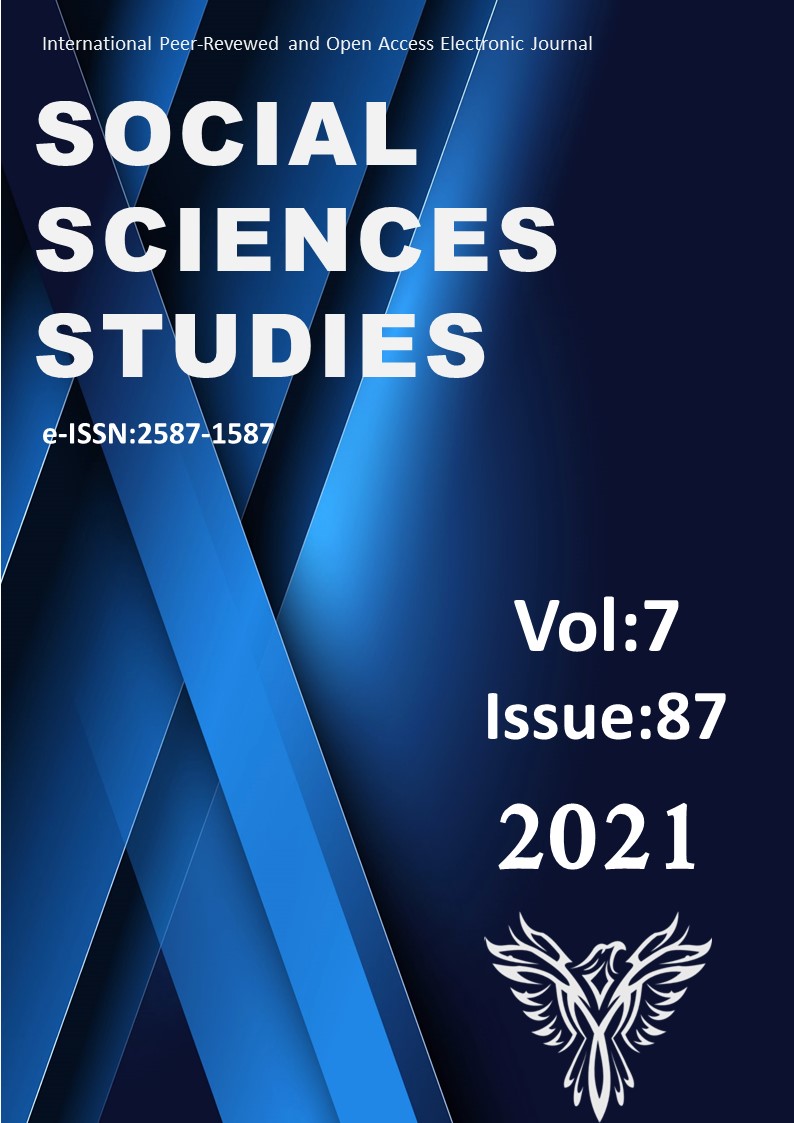Author :
Abstract
Günümüz turistleri gastronomi turizminde yerel ürünleri deneyimlemek istemektedir. Avrupa Birliği ülkelerinde ortaya çıkan ve daha sonra tüm dünyaya yayılan coğrafi işaretleme, gastronomi alanında yerelliğin yaşatılabilmesi için en etkili yöntemlerden biridir. Ayrıca yerel ürünlerin kalitelerinin korunması ve yasal olarak sertifikalandırılması için de coğrafi işaretlere ihtiyaç duyulmaktadır. Tüketiciler AB tarafından tescillenen yerel ürünlerin kalitesine güvenmektedir. Bu nedenle, dünyanın her yerinden AB’ye ürün tescili için başvuru yapmaktadır. AB’de tescilli ürünlerin mekânsal olarak hangi ülkelerde yoğunlaştığı ve gastronomi açısından hangi ülkelerin coğrafi işaretlemelere yöneldiğini belirlemek gastronomi turizminin geliştirilmesi için önemlidir. Bu bağlamda, çalışmanın amacı gastronomi alanında AB’deki coğrafi işaretlerin mekânsal analiz yöntemi ile değerlendirilmesidir. Çalışmanın verileri AB genelinde tescil edilmiş ürünlerin yasal kaydının tutulduğu eAmbrosia veritabanından alınmıştır. Araştırmanın kapsamını 1 Temmuz 2021 tarihine kadar AB’ye başvurusu yapılan ve tescillenen coğrafi işaretli gastronomi ürünleri oluşturmaktadır. Verilerin analizinde mekânsal otokorelasyonu test etmek ve ölçmek amacıyla yaygın olarak kullanılan Moran’s I ve LISA istatistikleri kullanılmıştır. Çalışma sonucunda, gastronomi alanında AB’ye yapılan ürün başvurularının ve tescilli ürünlerin Avrupa’nın belirli bölgelerinde kümelendiği tespit edilmiştir. Bu kümelenmelerin Akdeniz çanağı olarak adlandırılan bölgede yoğunlaştığı görülmektedir. Ayrıca çalışma ile Türkiye’nin gıda ve tarım ürünleri dışındaki diğer ürün türlerinde başvuru yapmadığı belirlenmiştir. Özellikle gastronomi turizminde içecekler de yiyecekler kadar önemli bir konu olduğu için Türk içeceklerinin de AB’de tescillenmesi önerilmektedir.
Keywords
Abstract
Today's tourists want to experience local products in gastronomic tourism. Geographical indication, which emerged in the European Union countries and then spread worldwide, is one of the most effective methods for keeping locality alive in the gastronomy field. Also, geographical indications are needed to protect the quality of local products and to legally certify them. Consumers trust the quality of local products registered by the EU. Therefore, it applies for product registration to the EU from all over the world. The development of gastronomy tourism needs to be determined in which countries the products registered in the EU are concentrated spatially and which countries are oriented towards geographical indications in terms of gastronomy. In this context, the study aims to evaluate the geographical indications in the EU in the gastronomy field with the spatial analysis method. The data of the study is taken from the eAmbrosia database, where the legal register of products registered across the EU is kept. The scope of the research consists of geographically indicated gastronomy products that have been registered and applied to the EU until 1 July 2021. Moran's I and LISA statistics, which are widely used to test and measure spatial autocorrelation, were used in the analysis of the data. As a result of the study, it has been determined that product applications and registered products made to the EU in the field of gastronomy are clustered in certain regions of Europe. It is seen that these clusters are concentrated in the region called the Mediterranean basin. In addition, with the study, it was determined that Turkey did not apply for other product types except food and agricultural products. Especially in gastronomy tourism, it is recommended that Turkish beverages be registered in the EU, as beverages are as important as food.
Keywords
- Yayla, Ö. (2021). “Avrupa Birliği'ndeki Coğrafi İşaretli Gastonomik Ürünlerin Mekânsal Analizi” International Social Sciences
- Studies Journal, (e-ISSN:2587-1587) Vol:7, Issue:87; pp:3748-3761 AVRUPA BİRLİĞİ'NDEKİ COĞRAFİ İŞARETLİ GASTONOMİK ÜRÜNLERİN MEKÂNSAL ANALİZİ Spatial Analysis of Gastronomic Products with Geographical Indications in The European Union Dr. Öğretim Üyesi. Önder YAYLA Osmaniye Korkut Ata Üniversitesi, Kadirli Uygulamalı Bilimler Fakültesi, Gastronomi ve Mutfak Sanatları Bölümü, Osmaniye/Türkiye ORCID ID: https://orcid.org/0000-0002-7967-1805 ÖZET Günümüz turistleri gastronomi turizminde yerel ürünleri deneyimlemek istemektedir. Avrupa Birliği ülkelerinde ortaya çıkan ve daha sonra tüm dünyaya yayılan coğrafi işaretleme, gastronomi alanında yerelliğin yaşatılabilmesi için en etkili yöntemlerden biridir. Ayrıca yerel ürünlerin kalitelerinin korunması ve yasal olarak sertifikalandırılması için de coğrafi işaretlere ihtiyaç duyulmaktadır. Tüketiciler AB tarafından tescillenen yerel ürünlerin kalitesine güvenmektedir. Bu nedenle, dünyanın her yerinden AB’ye ürün tescili için başvuru yapmaktadır. AB’de tescilli ürünlerin mekânsal olarak hangi ülkelerde yoğunlaştığı ve gastronomi açısından hangi ülkelerin coğrafi işaretlemelere yöneldiğini belirlemek gastronomi turizminin geliştirilmesi için önemlidir. Bu bağlamda, çalışmanın amacı gastronomi alanında AB’deki coğrafi işaretlerin mekânsal analiz yöntemi ile değerlendirilmesidir. Çalışmanın verileri AB genelinde tescil edilmiş ürünlerin yasal kaydının tutulduğu eAmbrosia veritabanından alınmıştır. Araştırmanın kapsamını 1 Temmuz 2021 tarihine kadar AB’ye başvurusu yapılan ve tescillenen coğrafi işaretli gastronomi ürünleri oluşturmaktadır. Verilerin analizinde mekânsal otokorelasyonu test etmek ve ölçmek amacıyla yaygın olarak kullanılan Moran’s I ve LISA istatistikleri kullanılmıştır. Çalışma sonucunda, gastronomi alanında AB’ye yapılan ürün başvurularının ve tescilli ürünlerin Avrupa’nın belirli bölgelerinde kümelendiği tespit edilmiştir. Bu kümelenmelerin Akdeniz çanağı olarak adlandırılan bölgede yoğunlaştığı görülmektedir. Ayrıca çalışma ile Türkiye’nin gıda ve tarım ürünleri dışındaki diğer ürün türlerinde başvuru yapmadığı belirlenmiştir. Özellikle gastronomi turizminde içecekler de yiyecekler kadar önemli bir konu olduğu için Türk içeceklerinin de AB’de tescillenmesi önerilmektedir. Anahtar Kelimeler: Avrupa Birliği’nde coğrafi işaretleme, Coğrafi işaretler, Gastronomi turizmi, Mekânsal analiz. ABSTRACT





